The mighty monarch
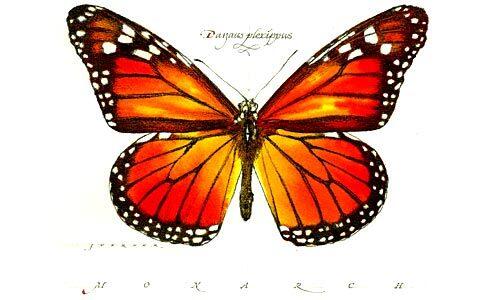
The film “Winged Migration” chronicles the amazing routes and distances that birds fly each year on their migration routes. Monarch butterflies do their fair share of traveling in a migration route that can cover up to 2,400 miles. It is a boggling feat for such flimsy creatures. They fly and float on wind currents, covering from 40 to 100 miles a day.
From November to March, monarchs from east of the Rockies converge on oyamel firs high in the mountains of Michoacan, Mexico. Meanwhile, all the monarchs west of the Rockies fly south and west to the U.S. coast, to the last stand of pine, eucalyptus or cypress before the winds they ride blow out to sea.
They descend on California each November in clouds of orange. The peak viewing season runs from about Thanksgiving to Christmas. Here are 10 places in California to see thousands of the butterflies. (Dugald Stermer / For The Times)
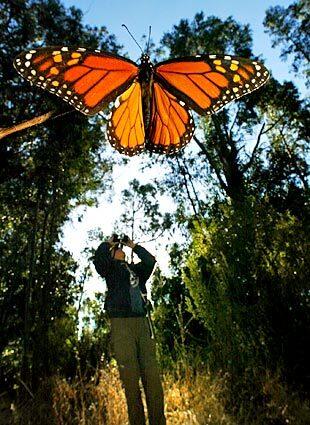
Monarch Butterfly Natural Preserve, Santa Cruz County.
The park’s monarch grove is about a five-minute walk along a wooden boardwalk from the entrance. Right now, there are 3,000 to 4,000 monarchs in the grove; sunny days are best for viewing because the monarchs flutter in the heat of day rather than cluster on trees. The park hosts monarch tours through February and a Migration Festival when they leave. To get to the preserve, take Swift Avenue west from Highway 1, or follow West Cliff Drive north along the bluffs until it ends at Natural Bridges. Contact: Natural Bridges State Beach, (831) 423-4609, www.parks.ca.gov.
Photo: A monarch butterfly resting near the ground in Big Sur is held by a photographer for a closer look.. (Spencer Weiner / Los Angeles Times)
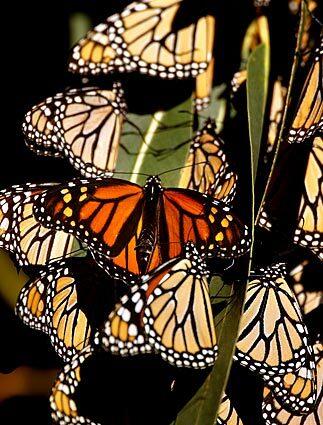
Andrew Molera State Park, near Big Sur.The butterflies apparently gather in trees near a walk-in campground called Cooper’s Cabin (entrance fee applies). Head north on Highway 1 and turn into the park on the inland (right) side entrance; the park is about 20 miles south of Carmel. Contact: (831) 667-2315 or www.parks.ca.gov. (Stephen Osman / Los Angeles Times)
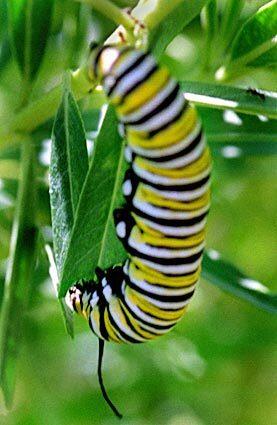
A monarch butterfly caterpillar hangs on one of the branches at the UC Irvine Arboretum. (Karen Tapia / Los Angeles Times)
Advertisement
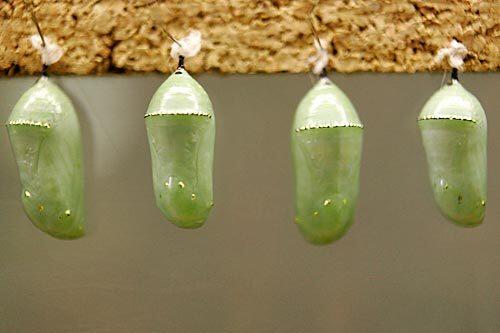
Live monarch butterfly pupae are on display during a preview of the Butterfly Conservatory exhibit at the American Museum of Natural History in New York in October. (Mary Altaffer / Associated Press)
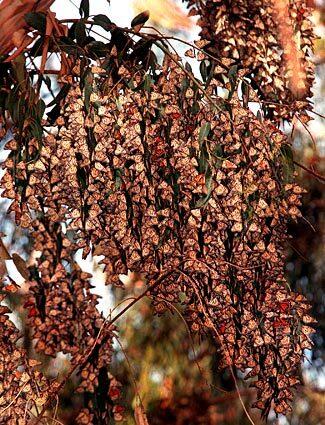
Ellwood Main Monarch Grove, Coronado Butterfly Preserve, Goleta.The eucalyptus grove that draws monarchs is part of the 9.3-acre preserve in Goleta near Santa Barbara. From Highway 101, exit Storke Road/Glen Annie and head south. Turn right on Hollister Avenue, go about 1.2 miles and take a left on Coronado Drive. Entrance is at the end of Coronado Drive. Contact: (805) 966-4520 or www.sblandtrust.org/coronado.html. (Lawrence K. Ho / Los Angeles Times)
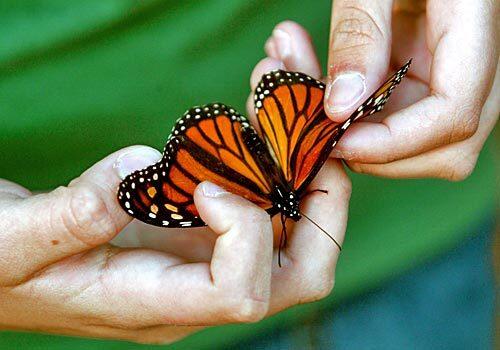
Camino Real Park, Ventura.
The entire park is known for being a butterfly magnet, but monarchs are known to cluster near several trees by the tennis courts. Contact: (805) 652-4550. (Bob Carey / Los Angeles Times)
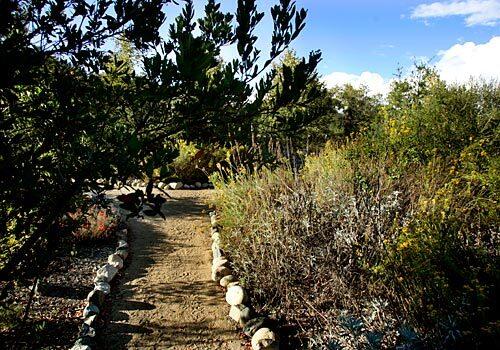
Butterflies flock to California in more than 200 spots. Here’s a trail in the Butterfly Garden at Thomas F. Riley Wilderness Park in Coto De Caza. But Orange County has another site that isn’t tied to migration.
Shipley Nature Center, Huntington Central Park, Huntington Beach. This Orange County beach town is better known for surfing than butterflies. But if you miss the winter migration, the nature center plants milkweed (a monarch’s favorite) and thousands appear in summer from June through September. Contact: (714) 842-4772 or www.shipleynature.org. (Christine Cotter / Los Angeles Times)



